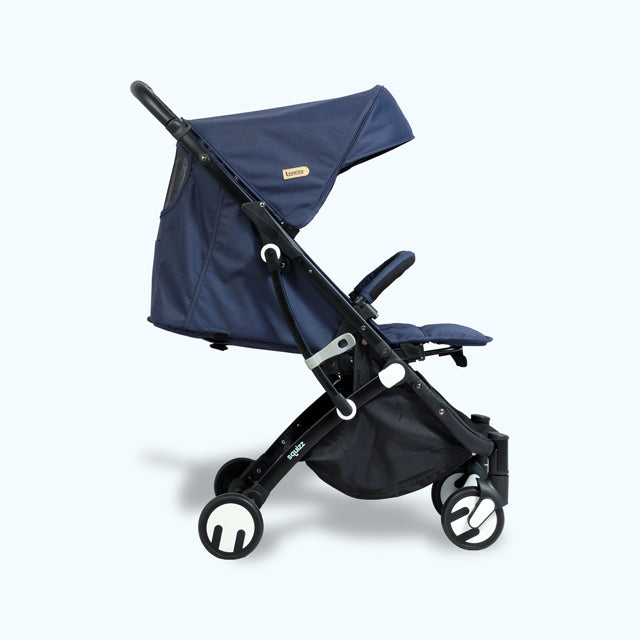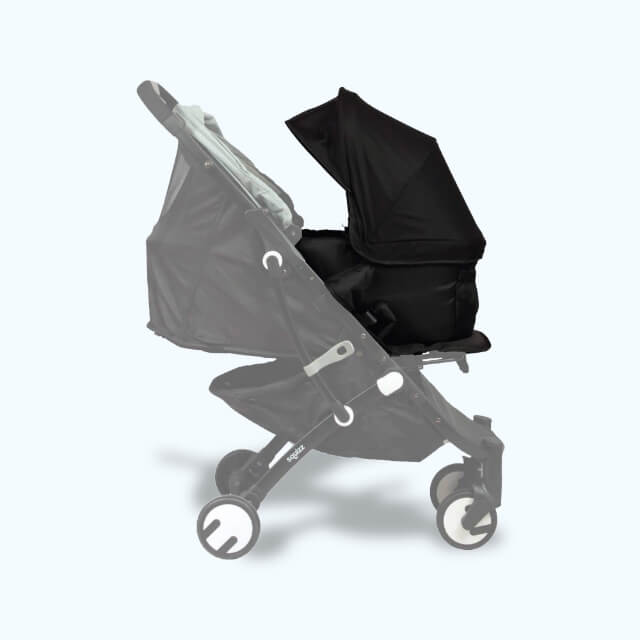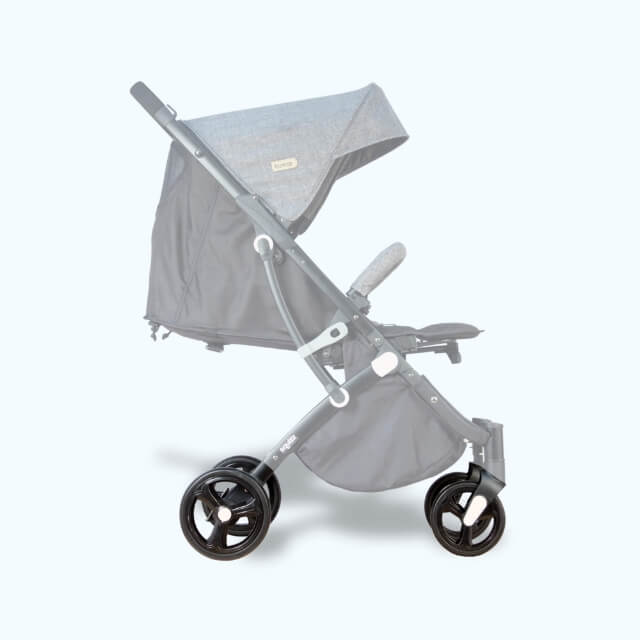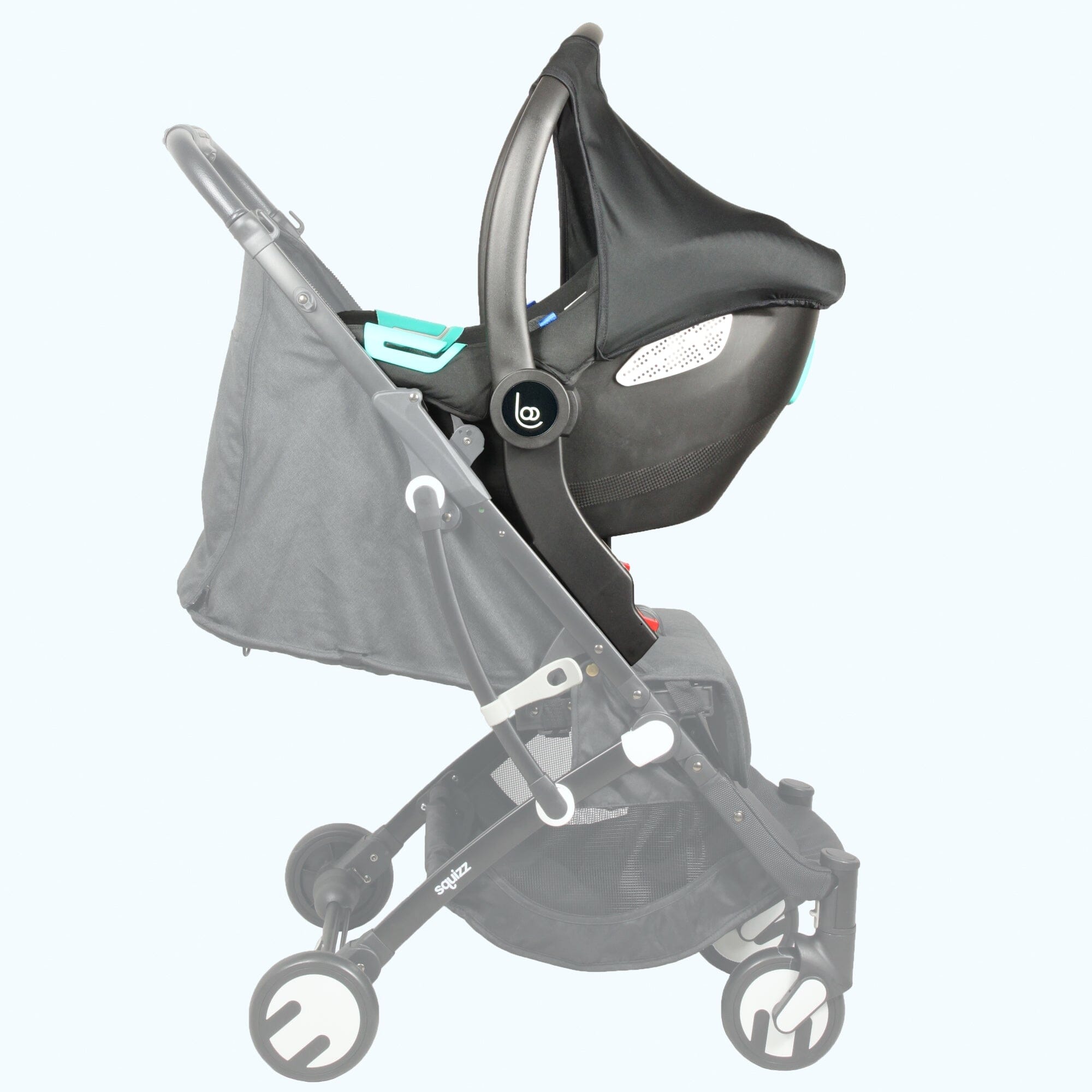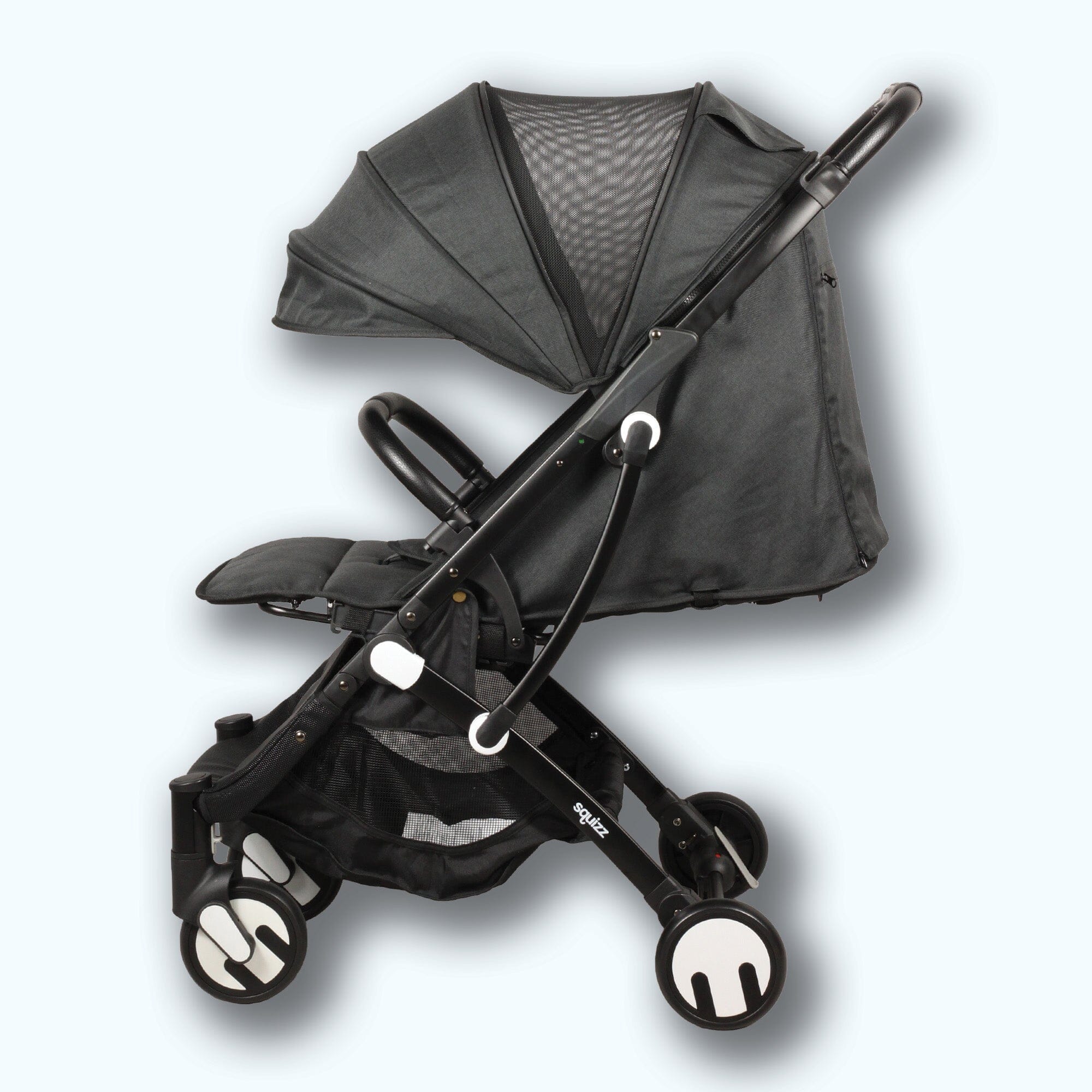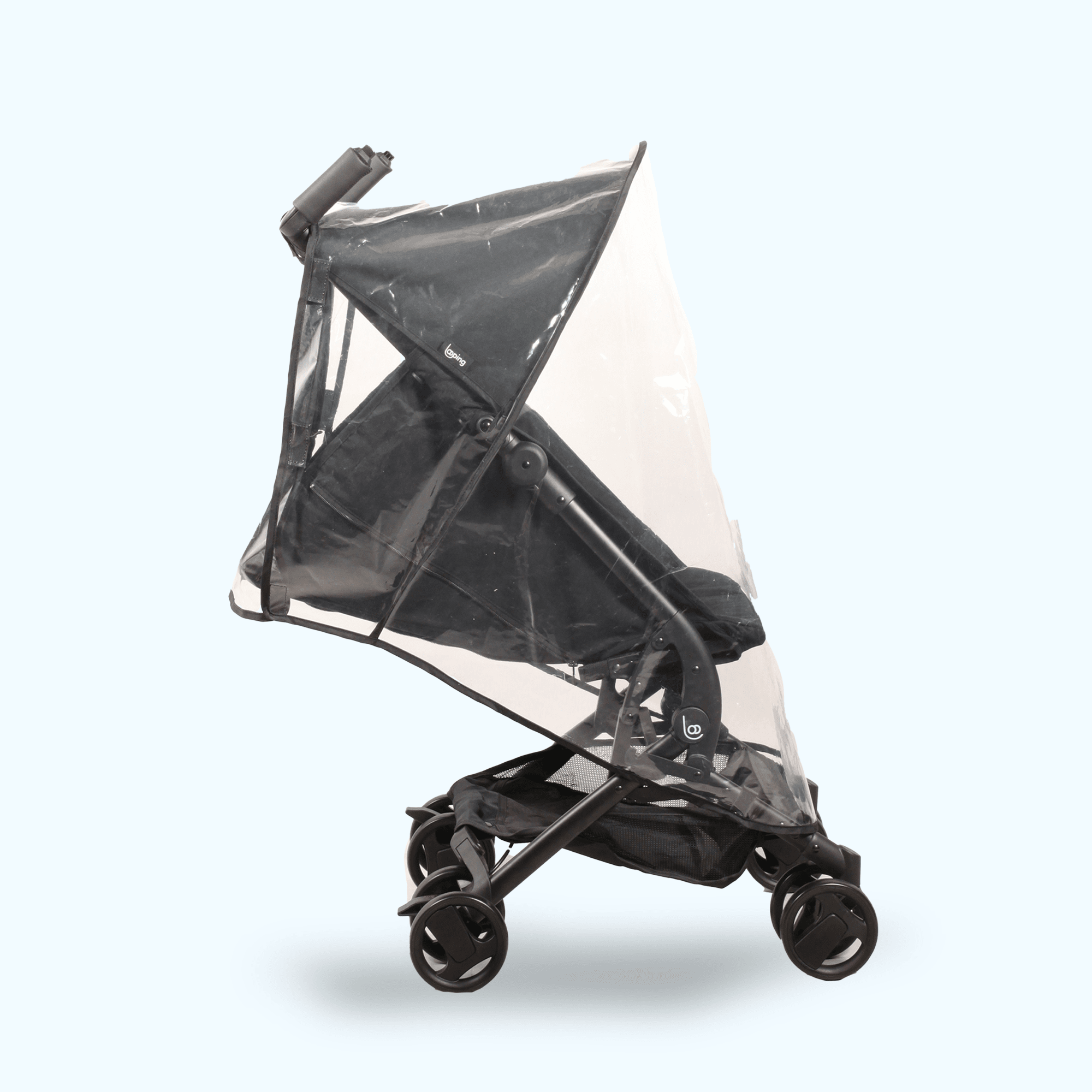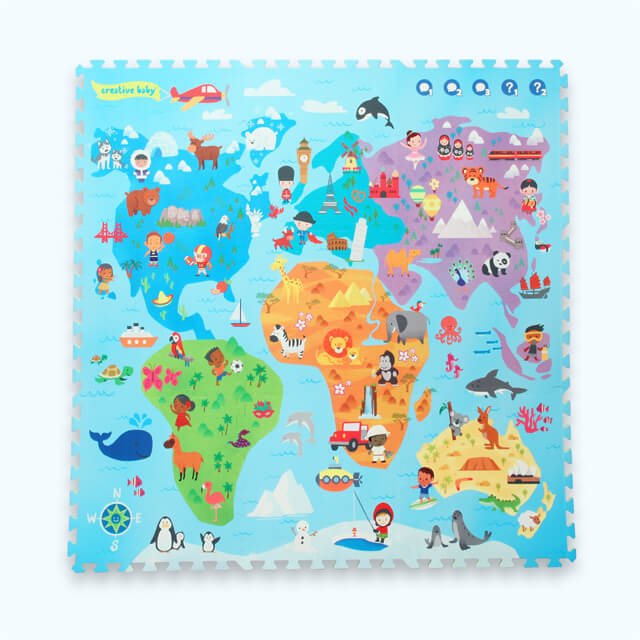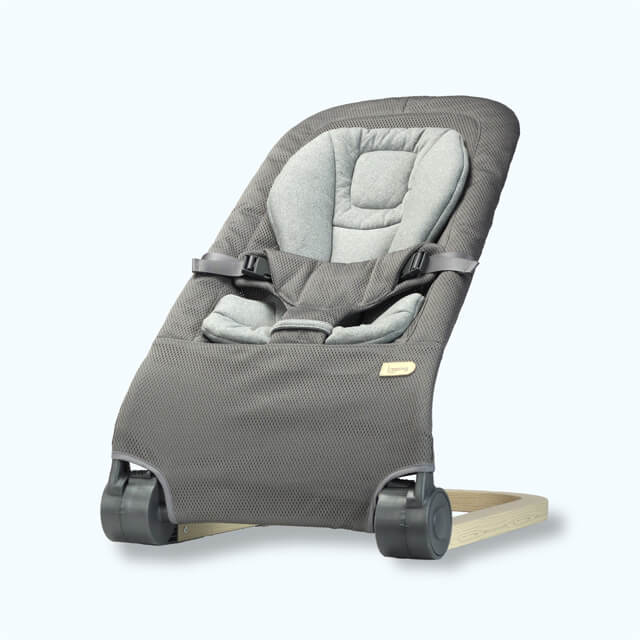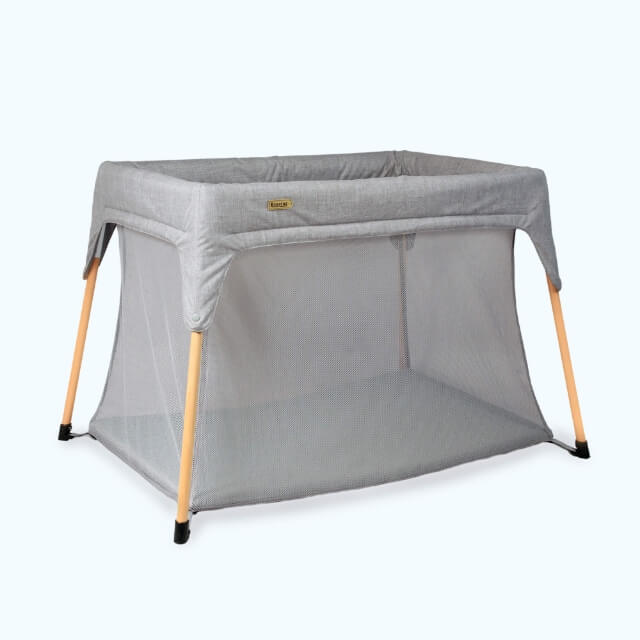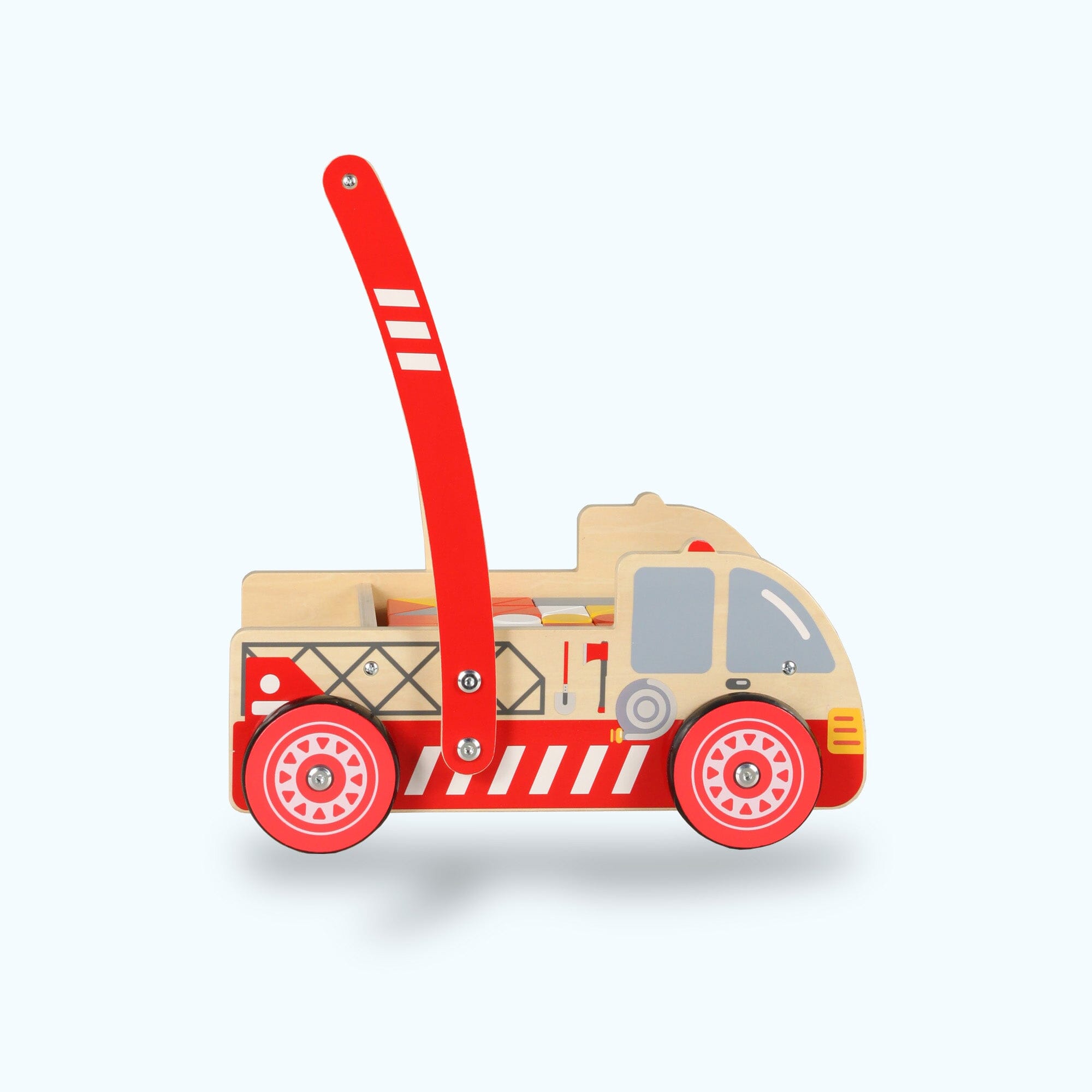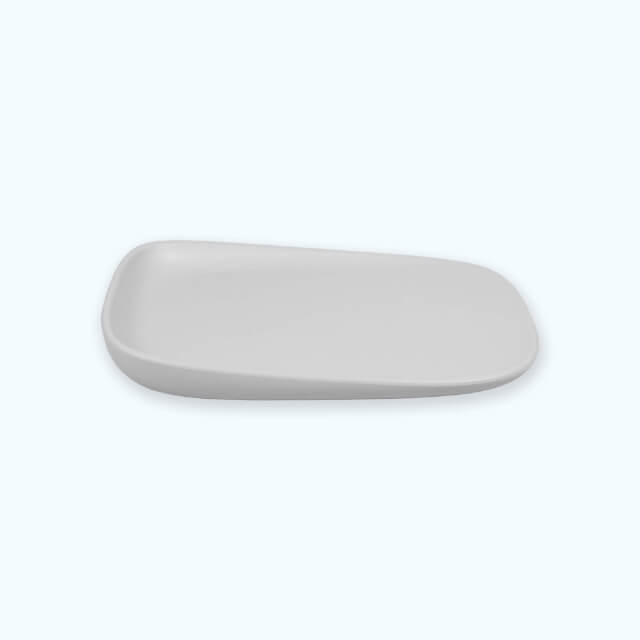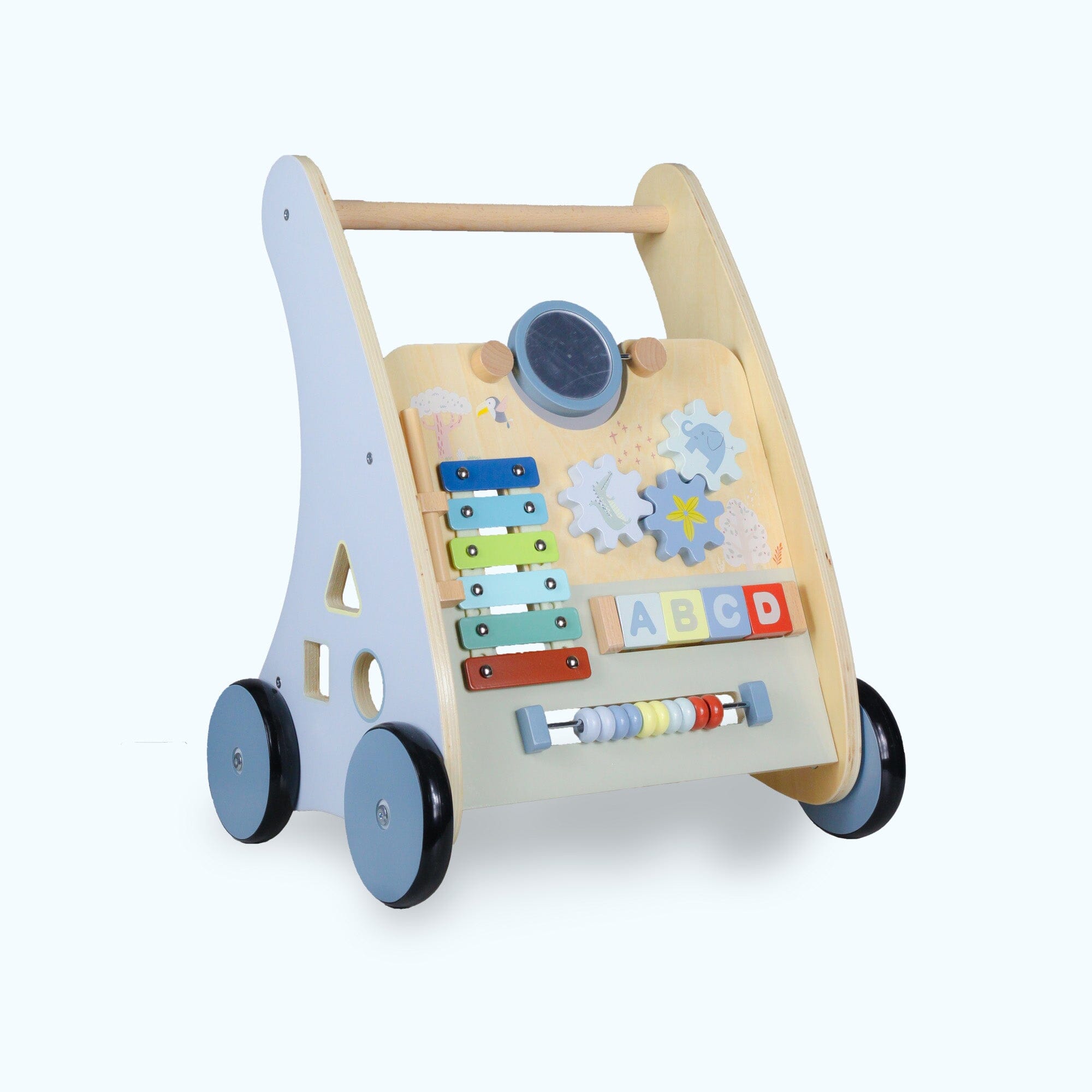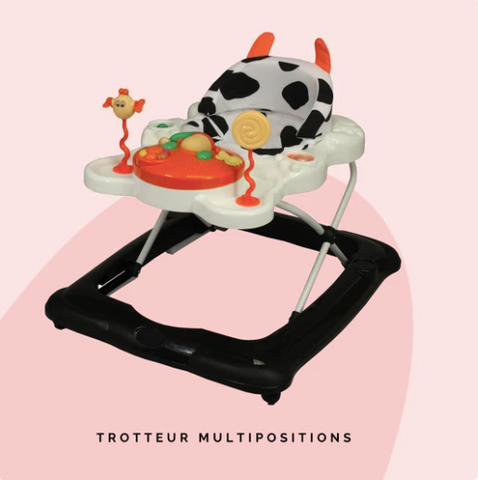During their first years of life, children develop their motor skills. They go through big stages that require a lot of effort. For their first steps, their first races or even their first jumps, there are many toys to accompany them.
In this article, we give you some pointers so that you can find your way around. We're giving you an approximate age, but it's just an estimate so don't worry if it doesn't match your little one's developmental stage.
Fine motor skills or gross motor skills?
Gross motor skills are often confused with fine motor skills. It designates all of the child’s “motor” gestures . These are all of the important movements that ensure the body's ease. For example, it allows you to coordinate your arms or legs.Fine motor skills, for their part, concern precise movements that use small muscles (for example those of the hand and fingers). It is between 4 and 8 months that the child begins to become aware of his body thanks to it.
Each child progresses at their own pace and there is no point in skipping steps. However, what does not change is the order in which the child goes through the stages of development. In fact, the child's development obeys the proximo-distal law. It is a neurological law according to which control flows from the center of the body to the periphery. More simply, this means that the shoulders will be checked first, then their hands and finally their fingers. This explains why babies develop gross motor skills before fine motor skills.
Mastering motor skills is very important, because it is an essential stage in the child's physical development. It is through their movements that children will discover it and then develop it. It is therefore essential that they can practice. Games are perfect for stimulating and using all your little muscles. For each stage of development, “motor” toys help enrich their physical activities. They then meet different needs.
Also note that there is a close link between motor skills (our movements) and the psyche (our sensations and reflections). This is called psychomotor skills . Between 2 and 6 years old, children develop different psychomotor skills. It is their desire to discover new horizons and try new experiences that will motivate them to get started.
How to develop fine motor skills?
To stimulate children's fine motor skills, you can use games or fun workshops. Over the years, children develop new movements that allow them better coordination of fingers, hands and eyes. Supporting them through their different stages will allow them to understand learning to write.
- Between 7 and 9 months, your children begin to hold objects to examine them, they hold their bottles and eat their food with their fingers. You can give them boxes and items to take and put in them. You can also play finger games with them.
- Between 10 and 12 months, children pick up objects, hold a spoon (with a little difficulty) and scribble on a sheet of paper. Your baby learns to move his arms and fingers with more control. The child demonstrates greater precision in his movements.
- From 1 to 3 years old, movements begin to become more global. It is between the ages of 2 and 4 that the child will choose one hand rather than another (which will determine whether he will be left-handed or right-handed). He becomes able to turn a doorknob, turn the pages of a book and work both hands together.
- From 3 to 4 years old, children start to draw. The child tinkers and is able to use a scissor. The child's fine motor skills will evolve until the age of 6
There are several types of workshops that will help you stimulate your children:
DIY activities
By tinkering, children will develop their fine motor skills, but also their imagination. You can encourage children to use materials (paper or fabric) and several techniques such as collage or cutting. Cutting with scissors will teach him to hold an object in his hand or to follow complex lines. This is a very good exercise to teach him to make precise movements.
Montessori activities
The Montessori method is an educational pedagogy based on the child's freedom in the choice of their activities, learning through experimentation and autonomy. It is particularly used to learn to read and count, but it can also be used to develop fine motor skills. For example, you can ask your child to do puzzles, put stickers or string beads to stimulate all the muscles in their little hands. Here you will find some ideas for activities.
Creative activities
Painting, drawing or playing with modeling clay allows him to concentrate his efforts on his hands and to bring more and more precision to his movements.
Everyday activities to develop your autonomy
In your morning routine, take extra time to teach him how to dress himself so that he can refine his fine motor skills. You can also let him eat with his hands, because without even realizing it baby is exercising. Little by little, he will learn to use a knife and fork. (which is also excellent for his motor skills)
All these activities will allow him to anticipate the actions of his daily life. They will help him develop his grasp of objects and dissociate his fingers.
How to develop gross motor skills?
As with fine motor skills, there are different toys to stimulate gross motor skills. This time, we will mainly talk to you about outdoor games that involve physical activity . The child will also go through different stages of development:
From 8 months, the beginnings of the development of gross motor skills
Gross motor skills begin from the age of 8 months when the child begins to move on all fours or crawling. It is at this moment that children begin to express their great vitality. Babies begin to move around, but still have little motor skills. Then at the age of 10 months, he begins to stand up on his own or by hanging on to furniture. They also start trying to move around. At this first stage, you can use different developmental toys to help him learn to walk:
- The baby rocker which is a 1st age toy on which the child sits and swings. To use it, the baby must be able to remain seated without needing assistance. This toy will allow him to develop these muscles and improve his balance.
- The baby carrier on which the children sit astride. It's a wheeled toy that requires them to push on the ground with their feet in order to move forward. Carriers are generally intended for children aged 12 months. By stepping over and moving forward, young children stimulate the muscles of both legs. They also begin to use the muscles in his hands and arms when turning his handlebars.
- The baby pusher which will allow the child to stand up. It's a toy with small wheels. It is also called a walking cart, baby walker or push toy.
- The baby walker which is also called youpala. It is often associated with the baby pusher, because it is also a walking aid. But unlike the pusher or the carrier, the walker is not a toy, but a childcare object.
With these 4 developmental toys, children develop their motor skills and the coordination of their movements. They improve their body balance. By moving around, children have a better understanding of their environment. They will thus be able to better understand the distances to objects and will be able to avoid obstacles.
From your first steps, a balance bike to learn balance
Between 10 and 20 months is the age when your child begins to take their first steps. At this age, children love interacting with you and are very interested in games. They begin to gain confidence and explore the world around them. To support him in this first stage of development, we must encourage him in his learning of balance.
To do this, think of the balance bike that helps him without him even realizing it. By moving forward on both feet, he instinctively finds his balance. This position also allows him to acquire autonomy. Indeed, learning to ride a balance bike can be done alone and your little wolves will thus have more and more confidence in themselves. It is a learning process that is done quickly and easily. It is very rewarding for your child to see that he can do it on his own, it will motivate him to continue his efforts. The balance bike also allows you to develop your reflexes by managing direction, speed or stopping.
It has another great advantage. It allows the child to return to a physiological and natural position. Unlike the tricycle, the balance bike mobilizes the entire body to move forward. This is then a very good position to start developing your motor skills.
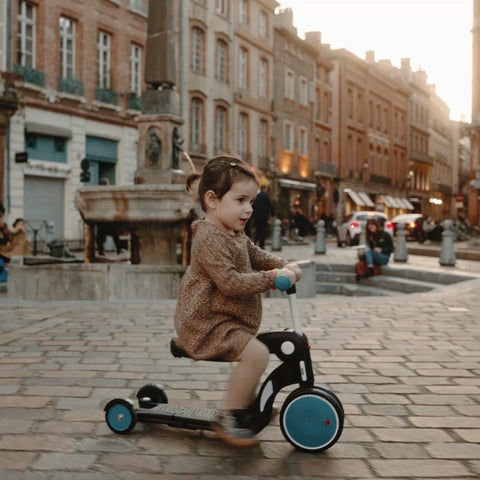
From 2 years old: a tricycle to learn to pedal
In general, it is estimated that a child can start using the tricycle from the age of two. It is only used when the child is able to walk and sit without too much difficulty. The tricycle offers many advantages. It helps your child learn their sense of orientation and coordination. With the balance bike, your child has found the right posture which will help them take their first steps on a real bike. But by pedaling, he develops his ability to synchronize his movements. He learns to coordinate his lower and upper body while having fun.
Thanks to its 3 wheels, the child finds much more balance than on a classic bike. It is a safe toy, because the child has little chance of falling. Your little wolves will be able to go on an adventure in complete safety!
Also, by pedaling your child tones his muscles. Even if the tricycle is much more stable than a classic bicycle, it requires the child to make physical efforts. By using it, little ones develop their strengths.
Like the balance bike, the tricycle contributes to the child's physiological well-being. It boosts his self-esteem and self-confidence by giving him independence.
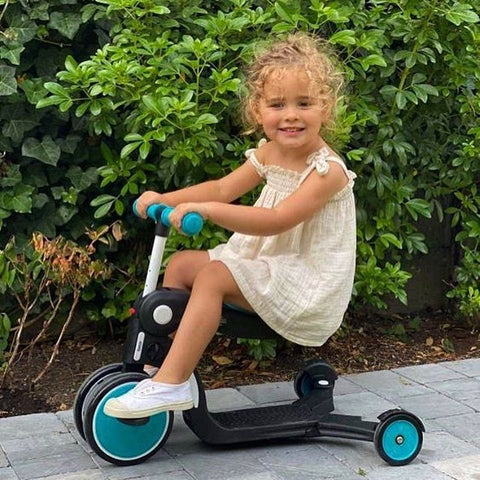
From 3 years old, the age of the 3-wheel scooter
From the age of 3, your children have acquired ease in their movements. They become autonomous and little by little begin to take initiatives. However, their balance is not yet perfect. Children want to get started, but still need to be reassured.
The 3 wheels allow the child to maintain a certain stability. Thus, it plays a transitional role before your child becomes completely independent. There are two types of 3-wheel scooter: the one with the front two wheels and the one with the rear two wheels. When the two-wheelers are at the rear, the child has an easier time in terms of fluidity of movement.
Furthermore, they are once again excellent for encouraging your child to do sporting activities. The child can combine pleasure and safety by ensuring a certain control over his car. With a good grip, children can fully spend without mom or dad having to worry.. ;)
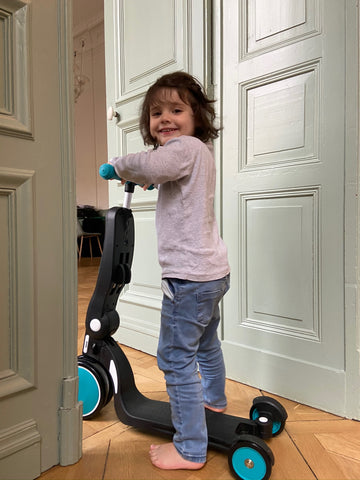
The 2-wheel scooter
Around age 5, your child enters their final stage of development . He can now jump rope, climb, slide, swing or even pedal. Your child has now acquired his autonomy and already has all the confidence to be able to get started.
The 2-wheel scooter is one of the last means of transportation on wheels before learning to ride a bike without the small wheels. She teaches children to move at their own pace. Using the scooter allows him to master even more balance, coordination of movements and perception of space. This is a very good exercise for orienting yourself and learning how to turn. Learning to ride a bike will become easier.
The importance of playing
Beyond boosting physical activity, all these motor toys will stimulate children's creativity and imagination . The game boosts their entire development, especially their intellectual development. By entertaining children, toys give them emotions. When you do physical activities with your child, he or she enjoys having fun and understands that exercise is fun.
Also, when you ride with them on their cars, you allow them to explore new places and discover new people, which will develop their curiosity . Being curious is a great quality in children, because it contributes to their development and learning.
Playing promotes social development. The child learns to live with others by sharing with his friends. At the same time, the child develops his language by expressing his ideas and exchanging ideas.
Each child develops their motor skills at their own pace, but by helping them with play you can encourage their development. You have to help him progress by making his efforts fun. This is why it is advisable to provide children with games and accessories so that they can fully flourish in their growth. But you will have understood that each stage of development corresponds to different needs and therefore to different games.
So why bother with all these products when you can find them all in one toy?
You may have heard about it, there is a new category of product that allows you to find everything your little wolves need to develop their motor skills: these are evolving toys. They allow us to support children throughout their learning while respecting their pace. They offer several functions with which children will gradually become familiar.
Scalable balance bikes, scalable scooters or even scalable tricycles, all its products allow them to explore their bodies and their abilities with complete peace of mind. This is why Looping chose to develop a 5-in-1 evolutive balance bike: the Scootizz. It accompanies your child from the age of 1 until the end of their motor skills development thanks to 5 functions that we have stated above:
- The 2-wheel and 3-wheel balance bike.
- The tricycle.
- The 3-wheel scooter then 2 wheels.
Beyond the many benefits for the child, the Scootizz saves you from having to renew your little one's car every year. Space-saving, you can take it everywhere with you (And even for plane trips...). It is the solution for parents looking for a durable product and maximum comfort for children since it is a scooter for all ages.
The advantage of the Scootizz also lies in its “assisted” function. If you wish or if your little ones are not yet ready for autonomy, you can add a push bar to the balance bike or tricycle function. And when the child gets tired, all he has to do is place his feet on the footrest and let himself be pushed by his parents. It also allows you to maintain control to prevent baby from escaping. You can then be reassured when you walk around town.
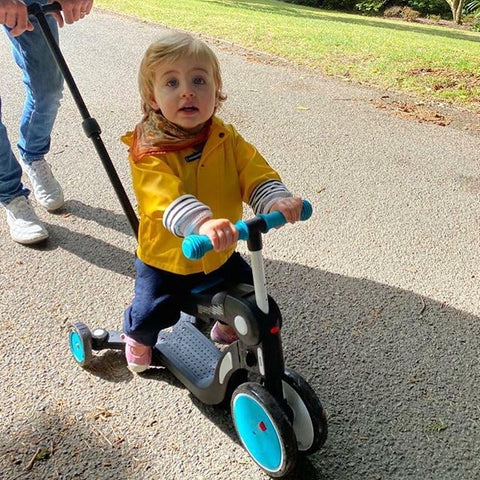
In short, children go through many major stages throughout their growth and it is sometimes difficult to navigate them. We hope these indicators help you! Motor skills are very important in children, because their development will give them the keys to grow and flourish.
Of course many other factors come into play in its development, including good nutrition. To find out more, do not hesitate to consult our previous article: how to eat healthily, for my family and myself.
Affectionately,
Louise.
